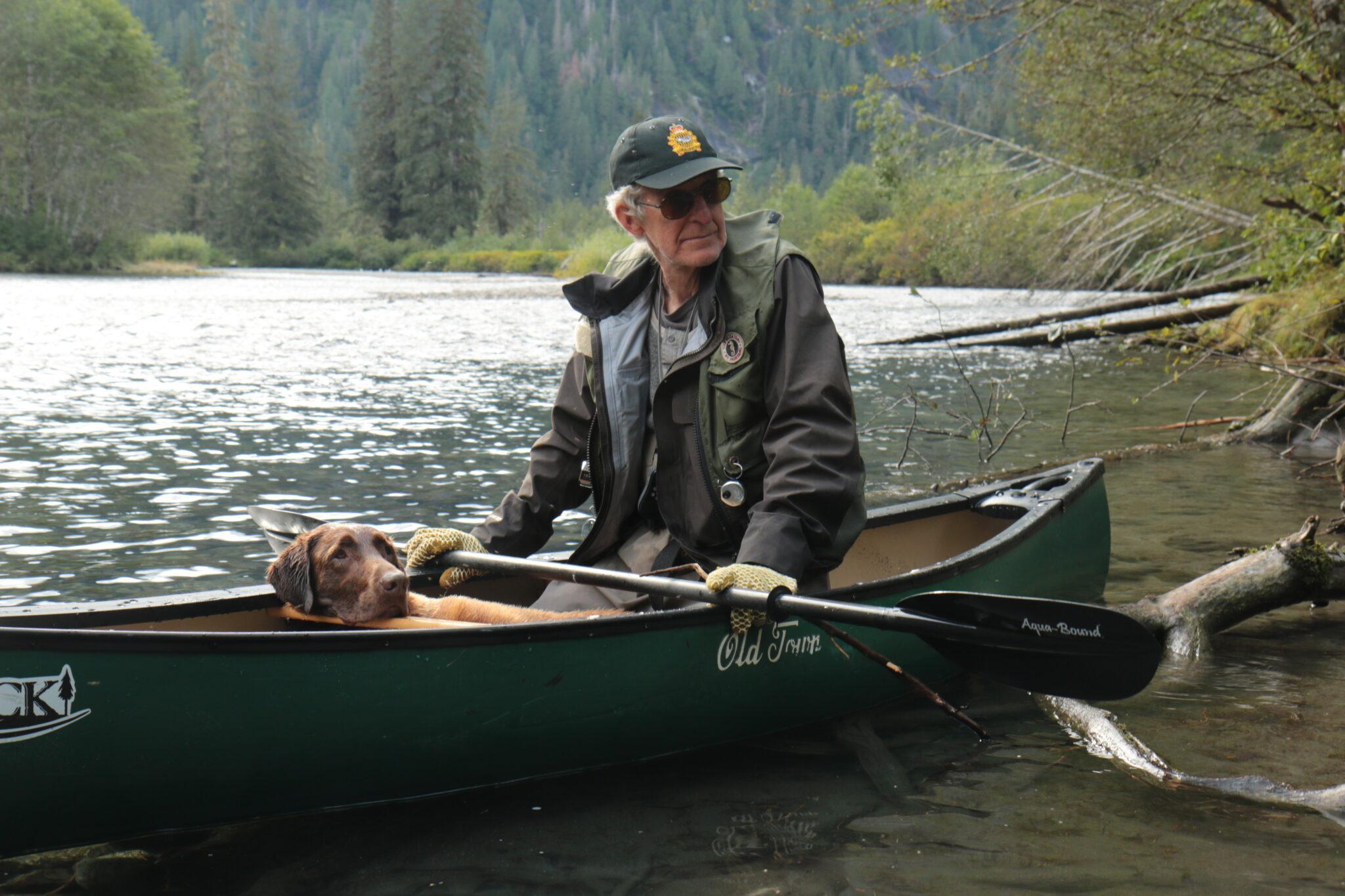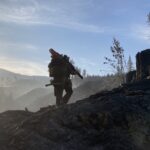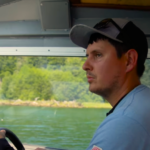Stan Hutchings is one of the last of his kind. He is a professional ‘creekwalker’ – a charter patrolman contracted by Fisheries and Oceans Canada (DFO) to walk the vast streams of the Skeena River and count salmon populations.
“Stan and Karen are heroes of the coast.”
Aaron Hill, Executive Director of Watershed Watch Salmon Society
Creekwalkers provide fisheries with much-needed data on current stocks, which in turn informs fisheries management and commercial quotas. Some Indigenous Nations have their own creekwalking programs. For example, the Coastal Guardians, a network of Indigenous communities along the Central and North Coasts that manage and conserve their respective territories, use creekwalking to monitor their salmon numbers.
“I walk the streams and actually count the salmon – they require me to do each stream three times or so, beginning, middle and around the end of the run, so they can get a good idea of how many fish are in there.”
Stan Hutchings
Sadly, funding for the DFO program is disappearing, and Stan is one of the last few remaining contracted creekwalkers in BC – he estimates from north Vancouver Island to Prince Rupert, there are only five left.
West Coast Now spoke with Hutchings and his wife Karen from their boat near Kitimat to discuss his important work, why there are so few creekwalkers now, and his concerns about the future health of BC’s rivers and streams.
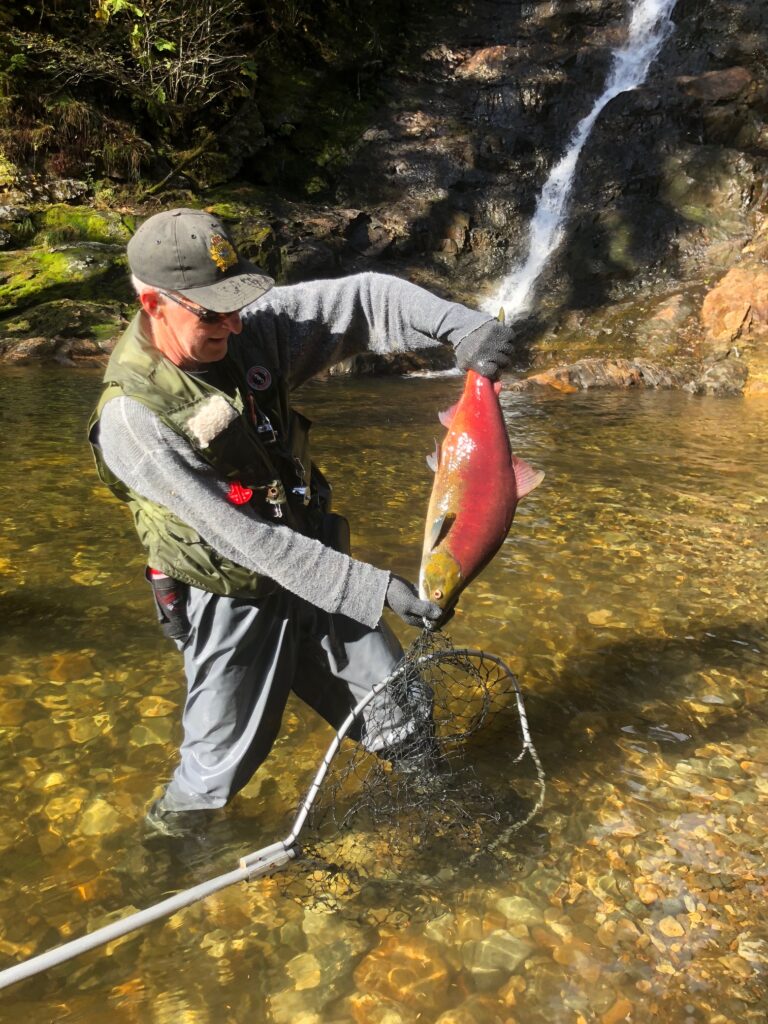
The Guardian of Area 6
Hutchings got his start back in 1974 working for the DFO in enforcement on patrol boats. After purchasing a friend’s boat, he transferred to creekwalking and hasn’t looked back since.
He is the only patrolman for Fishing Area 6, which includes the Douglas Channel and Hartley Bay along BC’s northern coast and covers over 10,000 square kilometres.
“I like being outdoors. I like being in the rivers. So it’s nice when I’m out there; I can do this and have a purpose,”
Stan Hutchings
“I have an area to look after, and it has so many streams in it,” he explains, estimating that he patrols fifty streams a year. “I walk the streams and actually count the salmon – they require me to do each stream three times or so, beginning, middle, and around the end of the run, so they can get a good idea of how many fish are in there.”
When asked about his process, Hutchings says he goes out on the creeks with a notebook and small tally counters attached to his vest, sometimes walking from dawn to dusk. He keeps his eye on the streams and clicks the counters as he goes, one for each species: pink, chum, coho, and sockeye.
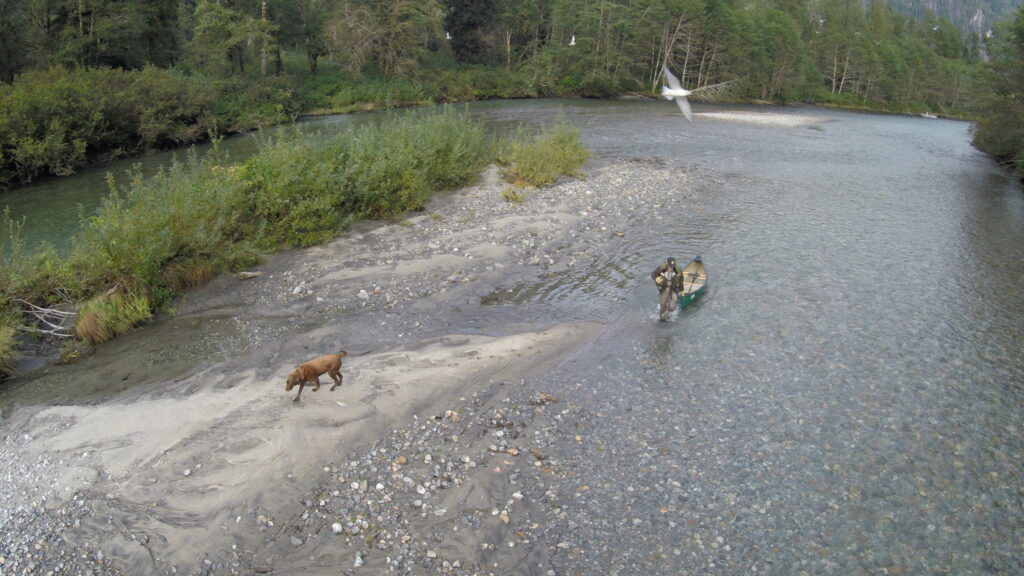
“I like being outdoors. I like being in the rivers. So it’s nice when I’m out there; I can do this and have a purpose,” he tells us.
His wife Karen chimed in, saying he wasn’t a fan of being a DFO officer, his job before creekwalking. “He didn’t really like the enforcement side or sitting in an office. This job really suits him to be out all day and working in the bush.”
“We’re all using salmon as food. There’s commercial fisheries, sports fisheries, First Nations fisheries … salmon is something that everybody wants.”
Stan Hutchings
The Last of the Creekwalkers
Creekwalkers play a crucial role in successful fisheries management, providing DFO with vital data on the health of salmon populations in any given year. In Area 6, there used to be five patrollers and their boats. Now it’s just Stan.
Creekwalkers play a crucial role in successful fisheries management, providing DFO with vital data on the health of salmon populations in any given year. In Area 6, there used to be five patrollers and their boats. Now it’s just Stan.
“Stan and Karen are heroes of the coast,” said Aaron Hill, Executive Director of Watershed Watch Salmon Society.
“It’s hard to understate the value of having Stan and other creekwalkers out there. He knows our streams and salmon runs like the back of his hand and keeps everyone alert to what’s happening out there. Whether it’s the number of fish coming back, or the conditions they are facing in the rivers, [creekwalkers provide] the essential information that’s needed to manage this precious resource.”
Both Hill and the Hutchings expressed concern that the DFO wasn’t continuing to fund the creekwalking program. Instead, officials seem comfortable using small sample sizes and statistical modelling to determine the health of a whole area. Yet these estimates are reported to be off by up to 50% and fail to capture the information of individual streams.
“With our climate changing so much … Salmon are probably one of the first indicators of things really going bad. When salmon start declining, water temperatures are rising, and the streams are getting lower water levels, it’s important to know what’s happening.”
Stan Hutchings
“We’re all using salmon as food. There’s commercial fisheries, sports fisheries, First Nations fisheries … salmon is something that everybody wants,” notes Hutchings. “We actually need to know how many there are every year, so when fisheries take that information, they can kind of do a rough calculation of what the returns would be like in the following years.”
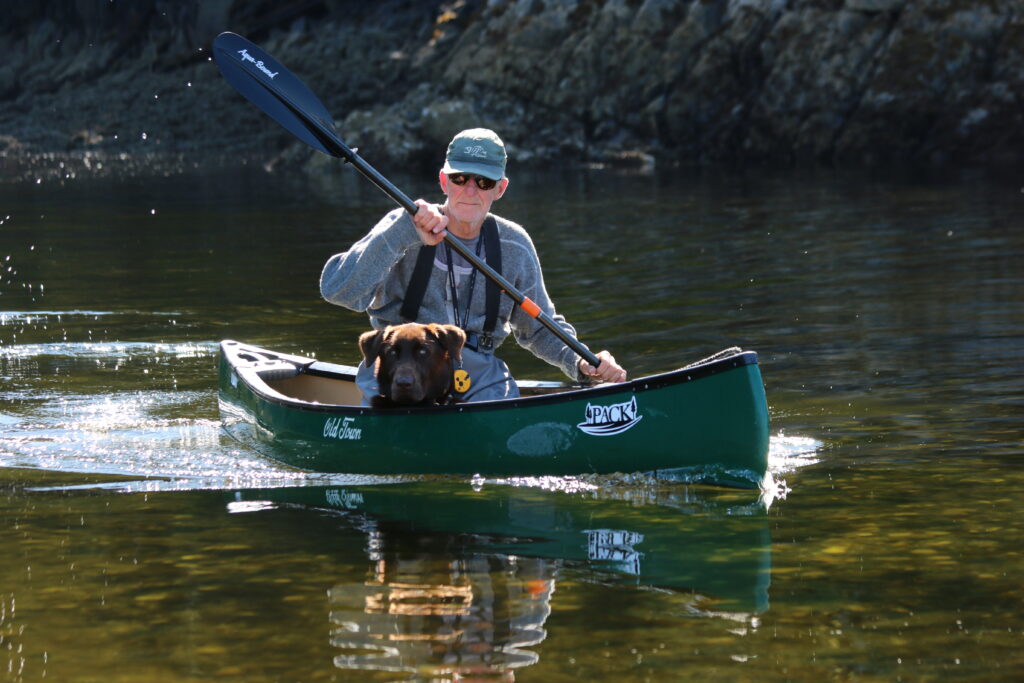
Hutchings states his work seems particularly essential today, given our changing environment. “With our climate changing so much … salmon are probably one of the first indicators of things really going bad. When salmon start declining, water temperatures are rising, and the streams are getting lower water levels, it’s important to know what’s happening.”
He has already noticed that it’s been a rough year for salmon and expects a decline in future numbers because water levels are lower than usual, which means salmon eggs are drying up, and fry are overheating and dying.
West Coast Now reported earlier this summer that over 80% of BC rivers are facing extreme drought, with the impact on these ecosystems expected to be massive.
Creekwalking Going Forward
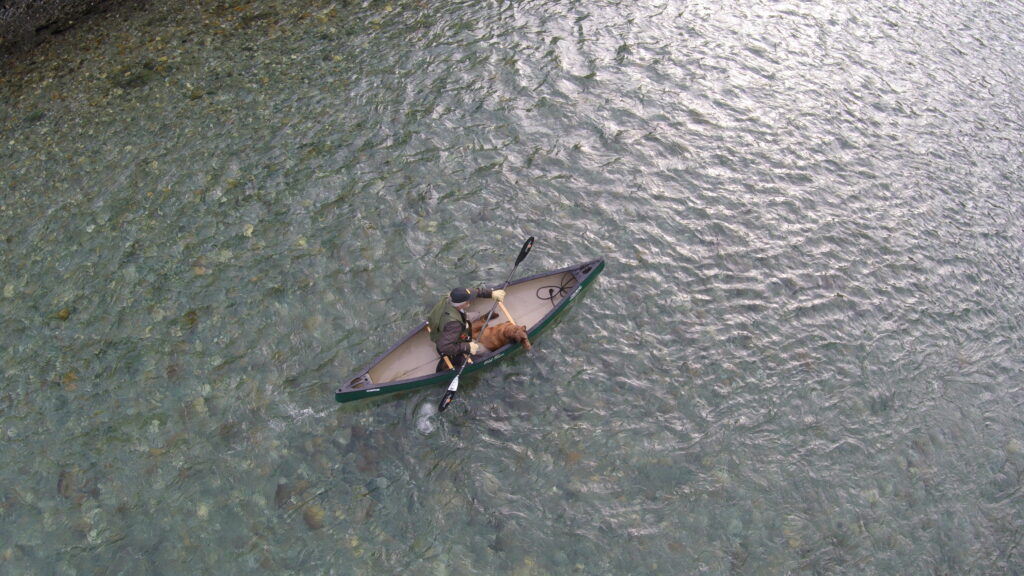
Even if DFO was to start hiring more creekwalkers, Hutchings points out that the barrier to entry is high, and the work is only getting harder.
“From when I first started till now … the amount of work that they expect from me is probably about five times more than when I first started,” he says. “I don’t think today you actually would find too many people that would do this job.” He says to be a creekwalker, you must have your own boat, take courses, and be certified in firearms and bear safety, among other things.
“You don’t actually make a lot of money. And even for me … it says in the small print on the bottom of the contract that they could not renew my contract at any particular time,” he says, speaking to the work’s precarity. “To invest a bunch of money into going out and doing this kind of work, you’d almost be a fool,” he says, laughing.
So after nearly fifty years, does Stan have any plans to retire?
“I am retired,” the 68-year-old jokes. “No, not yet. My legs are still good. I walked ten kilometres yesterday. I don’t really think about that too much, actually.”




